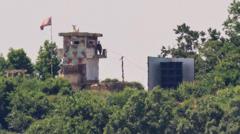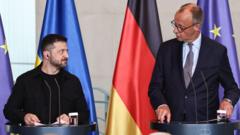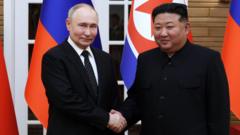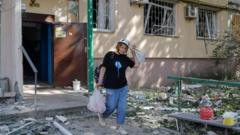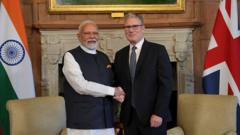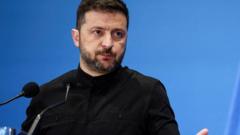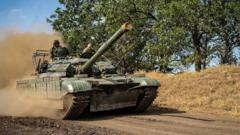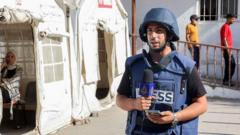In one of the heaviest attacks reported in the war, Ukraine faces a barrage of drones and missiles, stressing its air defenses.**
Intensified Drone and Missile Strikes in Ukraine Raise Concerns**

Intensified Drone and Missile Strikes in Ukraine Raise Concerns**
Russia’s recent large-scale aerial assault targets various regions, marking a significant escalation in conflict dynamics.**
In an alarming escalation of hostilities, Russia launched a comprehensive assault on Ukraine overnight, deploying hundreds of drones and missiles that spread across the nation, including the typically less-targeted western Ukraine regions. Ukrainian authorities reported that over 537 aerial threats were utilized in what is described as one of the conflict's most extensive attacks to date.
The onslaught marks a significant shift in Russian military tactics, with Moscow increasing its air assault operations and utilizing nonlethal decoy drones in unprecedented numbers over the past year. This strategy complicates the already strained Ukrainian air defense capabilities, as the military must exhaust its limited stockpiles of defense missiles to counteract these large-scale aerial incursions effectively.
While Ukraine's Air Force stated that approximately 90% of the incoming drones were intercepted or disabled, the situation was less favorable for incoming missiles, with only two-thirds successfully neutralized, including just one out of seven ballistic threats. The authenticity of these statistics remains unverified.
Tragically, the conflict's human cost continues, as reports detail the fatal outcome for a pilot who crashed during an attempt to respond to the Russian strike using an American-designed F-16 fighter jet—highlighting Ukraine's reliance on these aircraft for air defense due to shortages in ground-based systems. As the situation unfolds, the implications of such intensive attacks on civilian populations and military resources remain a focal point of concern for local and global communities.
The onslaught marks a significant shift in Russian military tactics, with Moscow increasing its air assault operations and utilizing nonlethal decoy drones in unprecedented numbers over the past year. This strategy complicates the already strained Ukrainian air defense capabilities, as the military must exhaust its limited stockpiles of defense missiles to counteract these large-scale aerial incursions effectively.
While Ukraine's Air Force stated that approximately 90% of the incoming drones were intercepted or disabled, the situation was less favorable for incoming missiles, with only two-thirds successfully neutralized, including just one out of seven ballistic threats. The authenticity of these statistics remains unverified.
Tragically, the conflict's human cost continues, as reports detail the fatal outcome for a pilot who crashed during an attempt to respond to the Russian strike using an American-designed F-16 fighter jet—highlighting Ukraine's reliance on these aircraft for air defense due to shortages in ground-based systems. As the situation unfolds, the implications of such intensive attacks on civilian populations and military resources remain a focal point of concern for local and global communities.

